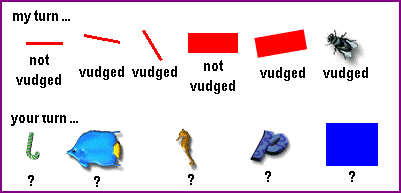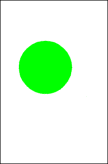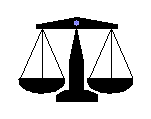Engelmann's Theory of Instruction
Note: Glossary links are in boldface.
To better understand why Engelmann's Direct Instruction is so effective and so maligned by the educational establishment, we will explore further his theory of instruction. In the book Theory of instruction: Principles and applications, Engelmann and co-author Douglas Carnine laid out a dramatic and contentious plan for the development of effective instruction (Engelmann & Carnine, 1991). What follows is a brief introduction to some of the basic concepts of Engelmann's approach.
Theoretical Foundations
One longstanding controversy in developmental and educational psychology concerns the relative contributions of "nature" vs. "nurture." Both perspectives acknowledge that children are biological organisms who interact with their environment -- at issue are the relative contributions of the child's biological nature or the nurturing role of the environment. Those from the nature camp assert that development and learning are, primarily, a result of biological unfolding of structure and function, and that educational methods should acknowledge the nature of the child and the inevitable stages of development (Piaget, 1980). Those from the nurture camp assert that development and learning are a result of the interaction of the biological organism with the environment, that the environment plays a primary role, and that education itself is an environmental intervention to expedite development (e.g., Bijou & Baer, 1978). Engelmann and Carnine leave no doubt where they stand on the nature vs. nurture controversy when it comes to intellectual development, learning and instructional design. They come down clearly on the side of nurture, asserting that the environment is the primary variable accounting for learning. The characteristics of the learner are recognized as important, but since instruction necessarily involves making changes in the learner's environment, environmental events are the focus of their instructional analysis.
Science and Logic
Engelmann and Carnine argue that a theory of instruction ought to be based upon a scientific analysis. They recognize that it is impossible to study scientifically the relationship between the environment and the learner without holding one of these factors constant and systematically varying the other. And since the learner cannot be held constant, it is the environment (the instruction) that must be carefully controlled. In effect, the instruction must be held constant in order to learn about the learner. When carefully controlled instruction is systematically presented to learners, the differences that learners bring to the situation can be measured and evaluated. The focus on carefully specified and controlled instruction is fundamental to Engelmann's scientific analysis of learning and development, and it is a cornerstone of his theory of instructional design and practices.
Faultless Communication: Concept Definition
Imagine that one could design instruction in such a way that it would communicate to the learner one and only one interpretation. There would be no misunderstandings, no confusion and no misdirection. Concepts would be learned perfectly. If this were true, then if one wanted to teach the concept "vudged," one would be sure that the instruction was going to allow the learner to identify cases where "vudged" was appropriate and cases where "vudged" was not. Vudged? What is vudged? Let's try to learn it.
First it will be my turn to communicate the concept of "vudged." I'll show you some examples and some non-examples. Then there is a little test to see if you've learned the concept. Relax. Remember I'm going to communicate the concept so that there is no possibility of misinterpretation.

Did you learn vudged? If you labeled the first, third and fourth items in the second row as vudged, then you got it. If we were to state "vudged" as a rule, it might be something like "not aligned horizontally," or more simply "tilted." Did you come up with something like that as your worked your way through the examples and non-examples?
The instruction presented you with examples of vudged and non-examples of vudged, isolated the feature that made things vudged or not vudged, and then tested to see if the instruction generalized to other stimuli. Logically, the instruction had to succeed. When instruction conveys the concept so accurately, Engelmann calls it logically faultless
Such faultless communication leads learners precisely to a single interpretation of the instruction, and ideally that same instructional communication would work for all learners. When instruction is faultless, it provides us a way of studying the learner. We can present faultless instruction to a number of learners and observe the effect of the instruction on their learning. Because the instruction is the same for all learners, we can rule out instructional factors accounting for observed differences in learning. Thus, each learner's response to the instruction provides precise information about the learner. This analysis is similar to the logic of "standardized tests" where the test and the testing conditions are held constant, and the response of the examinees is allowed to show variation. However, Engelmann's main interest is not in dividing students into categories for sorting purposes. His main interest is in developing instruction that will achieve faultless communication with all learners. Of course, in the real world of teaching, even when the instruction is logically faultless it doesn't always achieve the anticipated results. When instruction that has been designed to be faultless fails for a particular child, the teacher must resort to a remedial (behavioral) analysis. That is, the teacher must assess the child's behavior in relation to the particular instruction, and help the child learn the missing skills.
Since faultless communication is the core of the logic of Direct Instruction, allow us to restate the concept once again. What a learner learns is a function of the communication received (instruction) and characteristics of the learner that s/he brings to the situation. If the instruction is designed in such a way that it communicates a single intended interpretation to the learner (i.e., faultless instruction), then any misinterpretation by the learner must be a function of learner characteristics. If logically faultless instruction fails to achieve the intended communication, then it cannot be a fault of the instruction. Rather, a failure of the instruction indicates that there is a problem with the behavior of the learner, and remedial steps should be aimed at resolving the learner's difficulties. The design of faultless instruction involves a logical analysis of the stimuli presented to the learner rather than a behavioral analysis of the learner's characteristics. However, if faultless instruction fails, then the educator must turn to a behavioral analysis of the learner to provide appropriate remediation.
Remember that we call instruction faultless because it logically communicates the intended concept. This is what Engelmann calls a logical analysis. We can judge if a communication is faultless through logical analysis without attending to the effect of the instruction on learners. When we look at the functional relationship between a learner's behavior and the instruction, we are performing a behavioral analysis.
Engelmann and Carnine summarized the steps as follows:
- "Design communications that are faultless using logical analysis of the stimuli, not a behavioral analysis of the learner.
- Predict that the learner will learn the concept conveyed by the faultless presentation. If the communication is logically flawless and if the learner has the capacity to respond to the logic of the presentation, the learner will learn the concept conveyed by the communication.
- Present the communication to the learner and observe whether the learner actually learns the intended concept or whether the learner has trouble. This information (derived from a behavioral analysis) shows the extent to which the learner does or does not possess the mechanisms necessary to respond to the faultless presentation of the concept.
- Design instruction for the unsuccessful learner that will modify the learner's capacity to respond to the faultless presentation. This instruction is not based on a logical analysis of the communication, but on a behavior analysis of the learner". (Engelmann & Carnine, 1991, p. 3)
At first reading, the above notion of faultless instruction and the logical analysis might sound like Engelmann is blaming the learner for failures to learn. That is not the case. Engelmann ultimately takes responsibility for the learning of the student. When faultless instruction fails the teacher must move to an analysis of behavior to take steps that will correct deficiencies in the learner's cognitive repertoire. Where Engelmann and Carnine differ from some popular approaches to instructional design is that they do not assume the learner will learn regardless of the communication (Lally & Price, 1997).
Learning Mechanism Assumptions: Concept Definition
Theorists often begin by laying a foundation of facts and assumptions. Facts are statements that are universally accepted to be true, and assumptions are statements that are required to be true for the theory to make sense. Generally, theories with fewer assumptions are preferred over theories that must make many assumptions. Theories with fewer assumptions are considered to be more parsimonious. The theory of instruction posed by Engelmann and Carnine makes two simple assumptions about the learning mechanism possessed by learners.
- The learning mechanism is said to have the capacity to learn any quality from examples. Here "quality" is any irreducible feature of an example that can be detected by the learner's sensory system. This assumption states what the learner can learn, not how. If the learner's sensory system can detect a quality, then the learner will be able to learn to respond to that quality on the basis of examples and non-examples.
- The "learning mechanism" is said to have the capacity to generalize on the basis of sameness of quality. Engelmann and Carnine say, metaphorically, that the mechanism "makes up a rule" using positive and negative examples of a quality, and "classifies" new examples as positive or negative on the basis of this rule. This assumption states how the learner generalizes a learned concept to new stimuli from specific instances and non-instances.
Generalization: Concept Definition
Any sameness shared by all examples that are treated in the same way describes a generalization" (Engelmann& Carnine, 1991, p. 9). If a new example has the qualities of all prior positive examples, then the learning mechanism will classify the example as an instance of the concept. If the new example does not have the same qualities as prior positive examples, then the mechanism will classify the example as a non-example. These rule-construction and generalization-testing processes are not viewed as two distinct stages in learning. Rather, as each stimulus is presented to the learner the proposed mechanism is busy constructing and reconstructing the rules based upon the qualities of the examples, and making generalizations on the basis of the samenesses between past examples and the current stimulus.
The Structural Basis for Generalization
 Let's try teaching a concept. Imagine that we want to teach a naïve learner the
concept of "green." We will assume that the child has
normal sensory equipment that is capable of responding to differences
in color and other physical aspects of visually presented examples
(Engelmann's first assumption) -- the child is not color blind. We
might start our teaching by presenting an example and saying to the
child, "This is green." The first example might be a solid
green rectangle, 4 cm on a side, drawn on a sheet of white paper and
presented to the learner with one side base facing the child. Notice
that the example has multiple qualities. It has the color quality
that we intend to communicate as "green." And the example
has other qualities too including size (4 cm), context (on white
paper) and orientation. At this point the naïve learner (or if
you prefer the learner's mechanism) might form any number of rules.
For example, the mechanism might pose the rule that "things
presented on white paper are green." Or, possibly that "objects
with four sides are green," or "objects with four vertices
are green." Notice that many interpretations are possible with
just one example. "It is logically impossible to present a
single example of a basic concept that shows only one concept"
(Engelmann & Carnine, 1991, p.
11). So far, the communication is not faultless!
Let's try teaching a concept. Imagine that we want to teach a naïve learner the
concept of "green." We will assume that the child has
normal sensory equipment that is capable of responding to differences
in color and other physical aspects of visually presented examples
(Engelmann's first assumption) -- the child is not color blind. We
might start our teaching by presenting an example and saying to the
child, "This is green." The first example might be a solid
green rectangle, 4 cm on a side, drawn on a sheet of white paper and
presented to the learner with one side base facing the child. Notice
that the example has multiple qualities. It has the color quality
that we intend to communicate as "green." And the example
has other qualities too including size (4 cm), context (on white
paper) and orientation. At this point the naïve learner (or if
you prefer the learner's mechanism) might form any number of rules.
For example, the mechanism might pose the rule that "things
presented on white paper are green." Or, possibly that "objects
with four sides are green," or "objects with four vertices
are green." Notice that many interpretations are possible with
just one example. "It is logically impossible to present a
single example of a basic concept that shows only one concept"
(Engelmann & Carnine, 1991, p.
11). So far, the communication is not faultless!
Now let's present another example to the learner and say, "This is green." This time the example is a solid green circle, 4 cm in diameter and drawn on a white sheet of paper.
 According to Engelmann and Carnine the learning mechanism generalizes
on the basis of samnesses. What qualities do the two examples have the same? With
these two examples we have several qualities that are the same: color
(green), width (4 cm), context (on white paper), symmetry, and
2-dimensionality, as well as all of the other features that the two
examples might share (e.g., on the table, in the room, etc.). These
two examples are still not faultless communication since there are
many possible rules and many qualities that might be the basis for
classification.
According to Engelmann and Carnine the learning mechanism generalizes
on the basis of samnesses. What qualities do the two examples have the same? With
these two examples we have several qualities that are the same: color
(green), width (4 cm), context (on white paper), symmetry, and
2-dimensionality, as well as all of the other features that the two
examples might share (e.g., on the table, in the room, etc.). These
two examples are still not faultless communication since there are
many possible rules and many qualities that might be the basis for
classification.
What could we do with our examples to eliminate irrelevant qualities? Our second example might have been better if it had varied in many respects from the first example. For example, instead of a 4 cm circle drawn on paper we could have presented an irregular, 3-dimensional green object vastly different on a number of qualities from the original green square. With carefully selected positive examples it may be possible to leave the learner with a single classification rule, but trying to teach with examples alone is not efficient.
 Non-examples. Non-examples can also be used to sharpen the control exercised by a
single property. For example, imagine presenting to the learner a
drawing that was the same as the first example in all respects except
the color quality. It might be a solid red square, 4 cm on a
side, drawn on a sheet of white paper and presented to the in the
same orientation on the paper. We would present it and say, "Not
green." Since the two stimuli share many qualities but do not
share the same label, then the common properties are logically ruled
out as being relevant to "greenness."
Non-examples. Non-examples can also be used to sharpen the control exercised by a
single property. For example, imagine presenting to the learner a
drawing that was the same as the first example in all respects except
the color quality. It might be a solid red square, 4 cm on a
side, drawn on a sheet of white paper and presented to the in the
same orientation on the paper. We would present it and say, "Not
green." Since the two stimuli share many qualities but do not
share the same label, then the common properties are logically ruled
out as being relevant to "greenness."
Signals. Our examples above illustrate another element that is critical to concept learning and generalization. Positive examples must be treated in the same way during the communication, and negative examples must be treated in a different way. In the two positive examples the communication to the learner was "This is green." In the negative example we used "not green." Engelmann and Carnine refer to these labels as "signals." At the minimum we need two signals to communicate a quality, one for examples and one for non-examples. These signals are often verbal such as "green" and "not green," but they need not be. For example, it might be possible to simply sort examples and non-examples into two piles, or to point to them in conspicuously different ways. The advantage to using verbal signals is that most learners can say the signals themselves, allowing an easy method of assessing if the appropriate generalizations have occurred.
Restricting the Range of a Concept. Most qualities are not absolute. For example, "green" is not one particular wavelength of light - there is a range of acceptable wavelengths that are appropriately classified as green. To communicate this range of a concept it is essential that the selected examples and non-examples delimit the range of the target quality. In our example we would want the positive examples of green to vary within the normally acceptable wavelength limits of green. We would want also to attend to variations in brightness and saturation too so that the quality of green would not be confused with these other physical aspects of color.
Negative examples are actually very important in defining the boundaries of a concept. If we wanted the learner to respond differently to green and colors of similar wavelengths, then we might want to present those near non-examples (teal) and say, "Not green." Non-examples provide a quick way to sharpen discriminations.
Practice
Try this one. What quality defines the concept "rectus"?
1  |
2  |
3  |
4  |
5  |
6  |
7  |
8  |
9  |
10  |
11  |
12  |
Have you got it? Let's try a little test. Before reading further, verbally label each of the items below as rectus or not rectus



How did the examples and non-examples work to teach you the concept? Can you put the rule into words? If you labeled the band-aide and the scales as rectus, and the sailboat as not rectus, then we are both on the same wavelength. We think the sailboat is too vudged to be rectus, don't you? The way that we would state the rule is this: "Rectus: the item contains at least one horizontal or vertical straight edge." Did you come up with a rule similar to that?
Notice the specific sequence of items. In particular, note that the first and second items differ only in terms of the orientation of the line. The first one is an example of rectus and the second is not. By juxtaposing these two items that differ in only one respect, and by labeling them "rectus" and "not rectus," the sequence has emphasized the relevance of the defining quality of the concept. "The rule for accurately communicating differences through examples is: To show difference, juxtapose examples that are only minimally different and treat them differently" (Engelmann & Carnine, 1991, p. 12). The same rule applied to the fifth and sixth items in the sequence.
Juxtaposition can also be used to show sameness. "The rule: To show sameness, juxtapose examples that are greatly different; treat each example in the same way" " (Engelmann & Carnine, 1991, p. 11). Consider the ninth and tenth items.
Analyzing Whether Communications are Faultless
From the Engelmann perspective, we judge if a communication is faultless or not solely on the basis of the structure of the communication and without regard to the behavior of the learner. This logical perspective contrasts with other behavioral approaches to instruction, where the environment is analyzed according to its functional effects upon the individual (e.g., Bijou & Baer, 1961; Skinner, 1968). Engelmann and Carnine specify the criteria for judging if communication is faultless:
- The examples must be unambiguous about the quality to be generalized.
- The positive examples must have only one quality in common. A key point here is that we are dealing with sameness not similarity (too vague). Elements must be the same.
- The positive examples must show the range of acceptable variation.
- The negative examples must show the limits of the concept.
- The signals accompanying positive and negative examples must be clear and consistent.
- The communication must involve a test of the generalization.